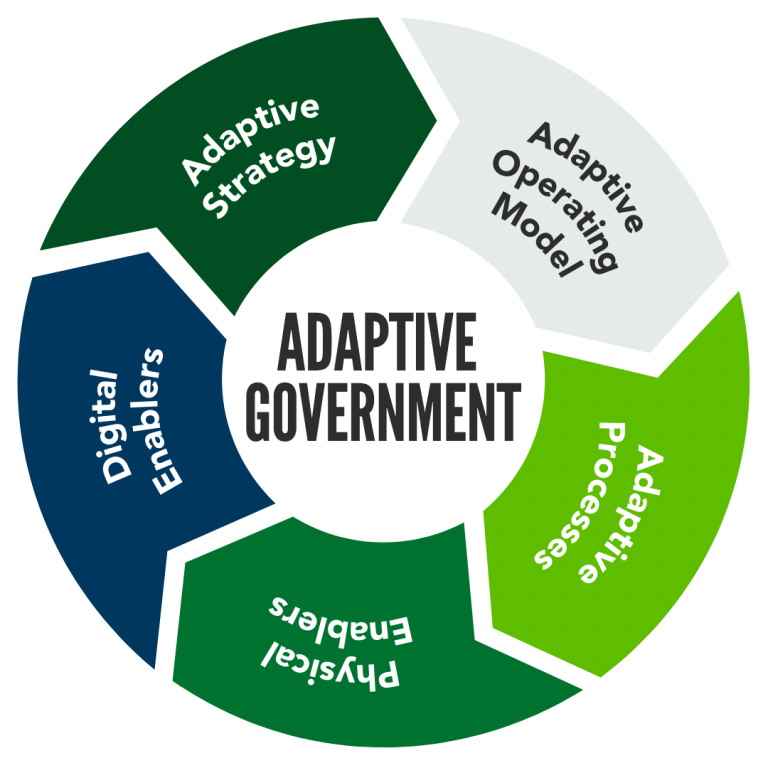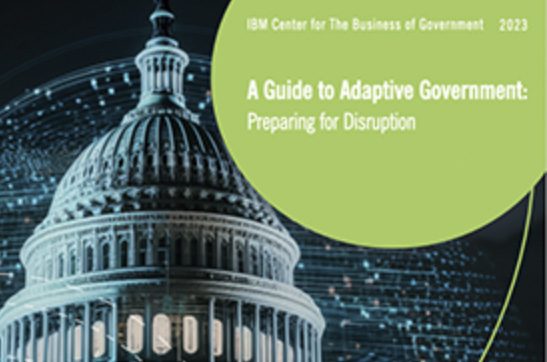City Adaptability Index™
Resources

Explore Our Latest Thinking


Frequently Asked Questions
Read through the FAQs below to help clarify questions about the City Adaptability Index and refer to the User Guide for detailed explanations. If you cannot find the answers to your questions here, please contact us. FAQs will be updated regularly.
Q1. What is the main theory or hypothesis of the City Adaptability Index™?
With disruption moving from the exception to the norm, it’s now more important than ever for cities to not just be resilient and sustainable, but to become adaptive to meet ever-increasing challenges and opportunities in the years ahead.
Q2. What is the purpose of the City Adaptability Index™?

Eight pillars of adaptability (city strategic goals) in the City Adaptability Index
The WGI City Adaptability IndexTM is a self-assessment tool for cities to benchmark their adaptability to continuous change and disruption.
This survey consists of 8 sections which correspond to 8 pillars of adaptability. Each pillar represents a strategic goal of the city such as “Sustainability & Environment”. While each city may have differing priorities, these are universal strategic goals for cities no matter their size or location.
By implementing digital and physical enablers of adaptability within each pillar, to rapidly respond to change and disruption, or to seize new opportunities, the Adaptive City is able to continuously optimize the key performance indicators (KPIs) and metrics associated with each of these city strategic goals.
It can therefore meet more of its goals, for more of its stakeholders, for more of the time.
Q3. What is the definition of an Adaptive City?
An adaptive city is designed to swiftly and effectively respond to changes in both the digital and physical environment.
An adaptive city balances lives and livelihoods as well as resilience and sustainability and all the political, economic, social, technological, legal, and environmental (PESTLE) external conditions that need to be continuously analyzed and acted upon.
Q4. Why is this important?
As disruption moves from the exception to the norm, cities need to be able to quickly react to change to continuously maximize their strategic goals for all stakeholders. While much work and progress has been achieved globally in the areas of sustainability and resilience, we believe that adaptability is a management discipline which needs similar attention.
Q5. How can adaptability benefit our organization?

Q6. Where can I find more information about adaptability?
WGI has been working with Columbia University’s Global Leaders in Construction Management (GLCM), to develop thought leadership and consulting tools related to our concept of “The Adaptive City”. We published our first thought leadership piece in the World Economic Forum (WEF), “3 steps to build “adaptive” smart cities of the future” and subsequent articles with the IBM Center for the Business of Government, “The Adaptive Government – Preparing for Disruption”, and the Global Infrastructure Hub (a G20 Initiative), “The Adaptive City”.
Q7. How is adaptability different from resilience?
Adaptive systems and resilient systems are often confused and thought of as interchangeable, but there’s a vast difference between the two concepts. Whereas an adaptive system restructures or reconfigures itself to best operate in and optimize for the ambient conditions, a resilient system often simply has to restore or maintain an existing steady state.
Resilient System - A resilient system has the ability to recover or regain to its authentic form or situation after exposure.
Adaptive System - An adaptive system has intrinsic agility to continuously maximize value by rapidly reconfiguring its processes in response to major changes in the internal or external environment.
In addition, whereas resilience is a risk management strategy, adaptability is both a risk management and an innovation strategy.
- The philosophy behind adaptive systems is more about innovation than risk management. It assumes from the start, that there are no steady state conditions to operate within, but that the external environment is constantly changing."

Comparison of Resilient versus Adaptive Systems
Q8. How does this vary with the size of the City?
The pillars in the index relate to strategic goals applicable to all cities. The difference is in the relative priority of each pillar based on attributes such as city size and location. e.g. Miami’s needs related to resilience are far different from those of Dallas.
Q9. How are you measuring adaptability?
We’re looking at the physical and digital enablers that allow the city to rapidly respond to change – including both challenges and opportunities.
Q10. What are examples of a digital or physical enablers?
Mobility
As an example, a city can become more adaptive in terms of its use of “Flexible Spaces” within the Mobility pillar by using techniques such as popup retail, programmable streets, and dynamic curb management.
This enables the city to “do more with less” such as leveraging existing infrastructure as well as becoming more adaptive to support dynamically changing needs of its stakeholders.
Both physical enablers such as pop up retail and digital enablers such as dynamic curb management can all contribute to this increased level of adaptability.
Efficiency & Resilience
As another example, a city can become more adaptive in terms of its “Hazard Management” within the Sustainability & Environment pillar by using techniques such as real time flood forecasting to predict flooding at the street and house level 2-4 days before it occurs.

Examples of Adaptive Systems in Government Use Today
Q11. How does this differ from a sustainability assessment or a resiliency assessment?
In the City Adaptability Index™ self-assessment, we’re not testing for absolute values such as percentage of energy from renewable energy sources (which a sustainability benchmark might ask), but more the City’s ability to switch dynamically as needed to maintain uptime across the power grid and so on. So, the focus is always on adaptability and ability to react to opportunities and challenges with intrinsic agility. This helps the city meet more of its goals for more of its stakeholders for more of the time.
Q12. How will our data be used in the City Adaptability Index™ and associated products and services?
Cities taking the City Adaptability Index™ self-assessment will receive a personalized report with recommendations for how they can advance their maturity along each dimension of the assessment.
Outside of these personalized reports (which are not shared with anyone outside the specific survey participants for each City), we plan to combine and anonymize the data so that cities can benchmark against their peers by looking at the peer average for their region, state or nationally (or even similar size cities etc.). Of course, we welcome case studies too for cities that would like to share their story.
Q13. We already have a number of active projects across the eight pillars (i.e. strategic goals) of the City Adaptability Index™, so how can this self-assessment assist us?
The report recommendations can be applied to existing projects (i.e. any projects) to help fortify these plans for increased adaptability in the planned designs/implementations. This just helps to add an adaptability dimension/perspective and set of considerations to the existing plans. The report recommendations may also spur new project ideas specifically related to adaptability as well.
Q14. What if we’re at one level of maturity in one part of the city and another level of maturity in another geographic part of the city?
Cities can take the survey and respond to questions based on their current state environment (as opposed to their future vision) by looking across their entire city jurisdiction. If they’re a “3” in one area and a “2” in another area (geographically) they would qualify for a “3” since they have “some” deployments already. We have worded the response choices specifically to deal with these types of situations where deployment of adaptive solutions ranges from limited to widespread.
Q15. What is the time estimate for taking the survey?
The time estimate for full survey is just 8-10 minutes.
Q16. How do our team members take the survey?
The self-assessment is available as both an online tool as well as via in-person consultation with WGI subject matter experts. It can be completed by single or multiple City representatives. We additionally have an option for cities to deploy the survey to their citizens in order to compare city official and citizen perspectives in terms of the level of adaptability of their city.
Q17. How do we prepare to take the survey?
We recommend reading our World Economic Forum (WEF) article, “3 steps to build “adaptive” smart cities of the future”, as a primer and then reviewing our client briefing documents. You can also decide which team members you’d like to take the survey – to address all eight pillars of the city strategic goals – so that all responses can be averaged for an overall score.
Q18. How are the various levels of maturity defined for consistency for all taking the self-assessment?
We have codified each response option for each question to provide multiple examples of what is considered appropriate at that level. This gives respondents an easy way to gauge their maturity by picking the digital and/or physical enablers they have already implemented.
Q19. Is there a fee associated with taking the City Adaptability Index™ self-assessment and what is WGI’s business interest in offering this service?
There is no fee in taking the self-assessment. As a national engineering firm, focused on innovation for the benefit of our clients, WGI has developed the City Adaptability IndexTM self-assessment as part of our mission of creatively transforming how our world is envisioned, designed, and experienced. We also believe that the discipline of “adaptability” deserves the same level of rigor and analysis as the well-advanced and mature disciplines of “resilience” and “sustainability”. In many of the assessment areas, there is a direct connection to WGI services, and our teams will be available to consult with clients to help them improve their level of adaptability as/where needed.
Download Resources >
Fill out this form to receive our FAQs and Overview documents to your inbox.
Framework Definitions

Pillars
A specific strategic goal of an adaptive city which it seeks to maximize and continuously optimize for the benefit of all citizens/stakeholders. An example is “Sustainability”.
Indicators
A specific focus area/domain area within a pillar which can be measured to determine the adaptive city’s success in achieving its strategic goals for that specific pillar. An example is “Renewable Energy” within “Sustainability”.
Enablers
A physical or digital enabler that provides improved agility in continually supporting and optimizing the desired strategic goals of the adaptive city in terms of its various pillars (strategic goals) and indicators (specific measurement areas within the pillar)







